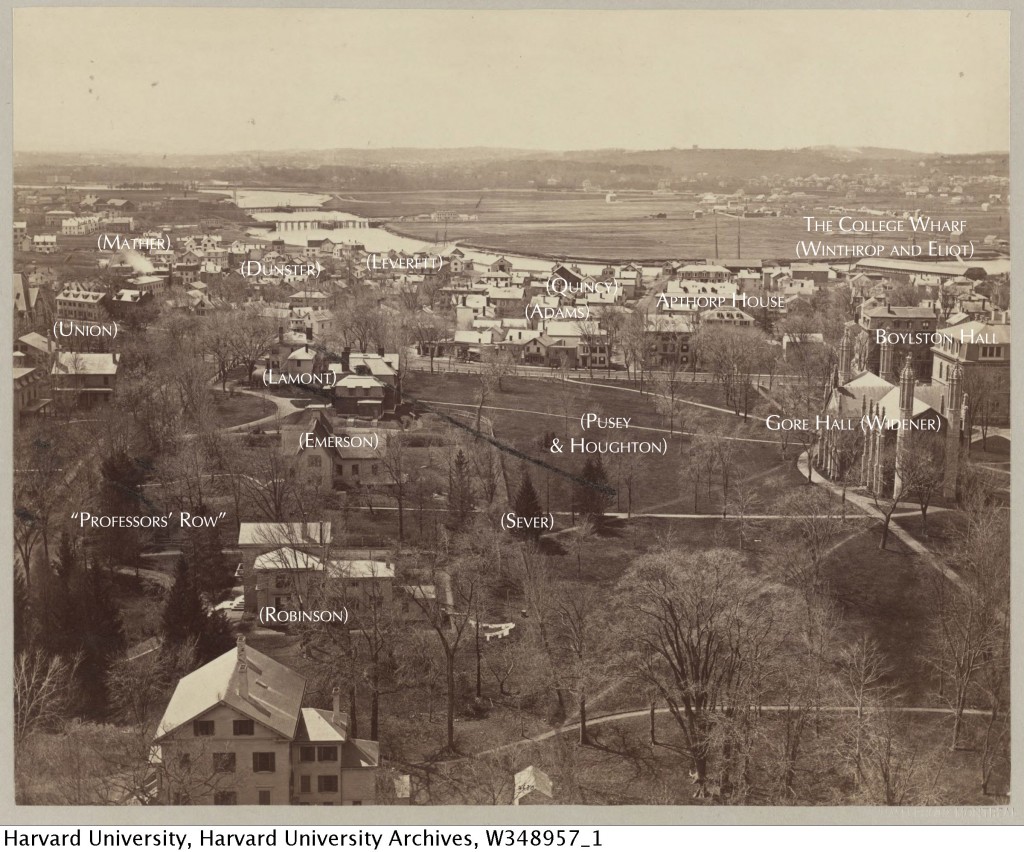As part of my Six Buildings That Shaped Harvard History tour for the HAA coming up on the 15th and again on the 26th, I’ve been doing quite a bit of research on the development of Harvard’s architecture over the years. As part of this review I came across a remarkable photo, which I wanted to share with you. It’s a view of Harvard looking south from the newly built tower of Memorial Hall, taken in 1874.
(Click on the photo to expand, then use your browser controls to zoom in even more. The photo is incredibly crisp and detailed – you can even see the masts of the cargo vessels on the Charles peeking (or peaking!) out over the rooftops. Even laundry drying in the backyard! NB: The names in parentheses indicate “future site of”.)
It takes a few minutes to get your bearings, as the landscape has so changed so dramatically, but this is almost exactly the Harvard that TR would come to know two years later. (The tree-lined street to the left is Quincy Street; the horizontal cross is Mass Ave.) What’s remarkable is how small the College remained up until that time – not terrifically different from the Colonial college of a hundred years earlier. A quaint Professors’ Row, a small Gothic Library, the odd hall and dormitory – just like many private colleges scattered across the country even today. Interesting too is the welter of tiny frame dwellings that cluster the semi-industrial riverfront. These parcels would have to be acquired one at a time over the next forty years in order to build the Georgian River Houses we all know so well. (Not so surprisingly, it was a private Foundation of far-sighted alumni, concerned that the College would have no room to grow, who started buying up the riverfront property a decade before the Administration came to the same conclusion. The parcels were later transferred to the College at cost.) Of dear Adams, only Apthorp House suggests the structures to come. (TR’s own lodgings, in a simple white frame structure long demolished to build the I.A.B (Malkin), is one of the jumble of frame buildings visible beneath the word “Eliot.”
What’s fascinating about all this, and what forms the basis of my tour, is how much Harvard’s architecture charts the College’s growth from tiny divinity school in the wilderness to worldwide center of learning, and how, given slightly different circumstances and the odd historical twist, Harvard might have turned out VERY differently from the one we know today.
While the tour on the 15th is sold out, the one on the 26th still has some spots, so do join us if you are in Cambridge.
Some People Read History. Others Make It.
Come make a little history: support the FDR Suite Foundation!


Fascinating!